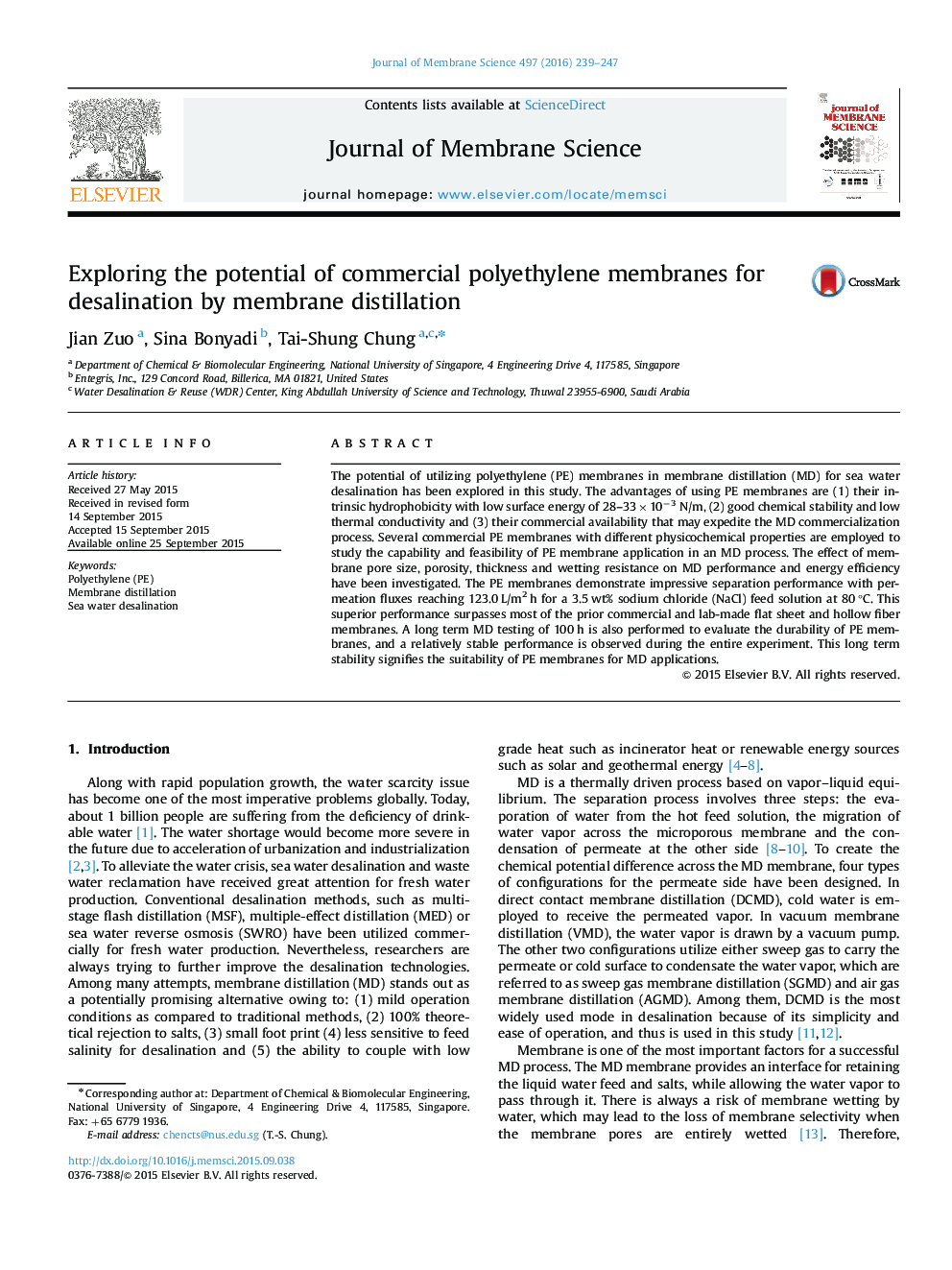| Article ID | Journal | Published Year | Pages | File Type |
|---|---|---|---|---|
| 632663 | Journal of Membrane Science | 2016 | 9 Pages |
•Thermally induced phase separation (TIPS)-made polyethylene (PE) membranes.•Study of seawater desalination via membrane distillation.•Investigation of membrane physiochemical properties on separation effectiveness.•Analysis of the energy efficiency of various membranes.•Stability of the PE membranes at a 100-hour continuous running.
The potential of utilizing polyethylene (PE) membranes in membrane distillation (MD) for sea water desalination has been explored in this study. The advantages of using PE membranes are (1) their intrinsic hydrophobicity with low surface energy of 28–33×10−3 N/m, (2) good chemical stability and low thermal conductivity and (3) their commercial availability that may expedite the MD commercialization process. Several commercial PE membranes with different physicochemical properties are employed to study the capability and feasibility of PE membrane application in an MD process. The effect of membrane pore size, porosity, thickness and wetting resistance on MD performance and energy efficiency have been investigated. The PE membranes demonstrate impressive separation performance with permeation fluxes reaching 123.0 L/m2 h for a 3.5 wt% sodium chloride (NaCl) feed solution at 80 °C. This superior performance surpasses most of the prior commercial and lab-made flat sheet and hollow fiber membranes. A long term MD testing of 100 h is also performed to evaluate the durability of PE membranes, and a relatively stable performance is observed during the entire experiment. This long term stability signifies the suitability of PE membranes for MD applications.
Graphical abstractFigure optionsDownload full-size imageDownload high-quality image (162 K)Download as PowerPoint slide
